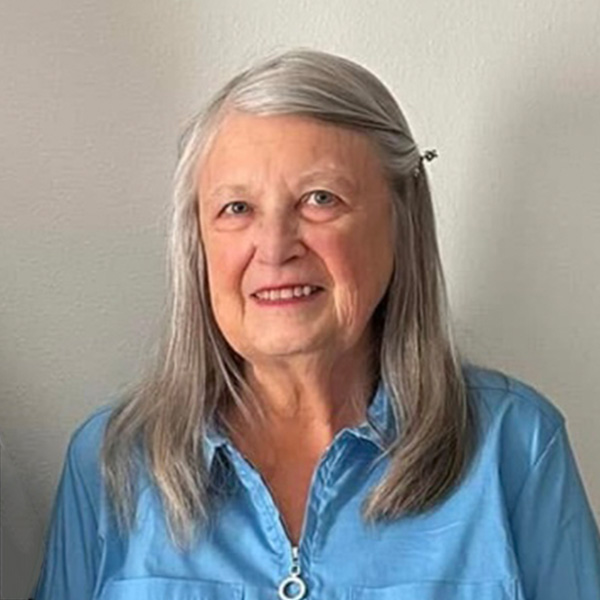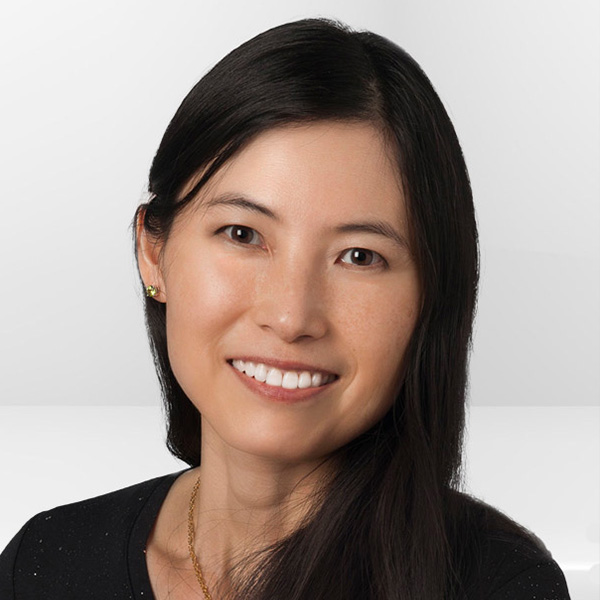Quarterly Update from Florida Leadership
Dear Friends,
I want to take a moment to express my heartfelt gratitude for your unwavering support of Cleveland Clinic in Florida. Your generosity is the driving force behind our mission to deliver exceptional care, foster medical advancements and embrace our communities with compassion and excellence. As we continue to grow and adapt, your partnership is not just vital; it is genuinely cherished.
I'm excited to share some important news about VeloSano, Cleveland Clinic’s premier fundraising initiative for cancer research. VeloSano has a rich tradition that began in Ohio, where it has brought together communities and propelled transformative cancer research for many years. Since 2014, the VeloSano community has raised an incredible $80 million, supporting more than 260 innovative cancer research projects at Cleveland Clinic.
As the VeloSano movement continues to grow worldwide, we are thrilled about expanding its reach and impact by creating our own signature fundraising event, Florida for the Cure. I’m excited to be part of this incredible global legacy, instilling hope and innovation in countless patients and families.
Florida for the Cure will be kicking off all VeloSano signature events in the upcoming year. Mark your calendars for Saturday, March 28, 2026, as we come together at The Fort in Ft. Lauderdale for an unforgettable day!
VeloSano is not just an event; it's a movement. Every dollar raised fuels essential cancer research and provides hope to those who need it most. Your contributions—whether through donations, participation or advocacy—have a profound impact. We encourage you to stay connected, share this exciting news and consider contributing today. Together, we are paving the way for a brighter future in healthcare.
Learn more about our global fundraising movement to support cancer research at VeloSano.org.
With warmest appreciation,
Conor P. Delaney, MD, PhD
President, Cleveland Clinic Florida Market
Executive Vice President, Cleveland Clinic
The Woman Who Got a New Lease on Life

A doctor told Chris Keener she had five weeks to live. Cleveland Clinic had other plans for her.
Now living in Florida, Christina Keener spent most of her life in Pennsylvania. Her career included work as an elementary school and special education teacher, eventually becoming a consultant to school districts and universities. Over her long educational career, she earned many honors and distinctions, including being twice recognized with Pennsylvania’s prestigious Master Teacher award.
“It was the day after Christmas, 1999 when I began feeling very ill. I continued to worsen, eventually having difficulty breathing. Our next-door neighbor and friend, Dr. Bob Luderer, sent me to a Pittsburgh hospital for pulmonary tests, and they found that I had mitral and tricuspid regurgitation, and wanted to replace my heart valves. Then Bob suggested I get a transesophageal echocardiogram to get detailed images of my heart. In February 2000, I received a phone call from a doctor who said 'I'm sorry to tell you this ... but we found something and nothing can be done. You have about five weeks to live.' He told me to get my affairs in order. I was 49 years old.
Bob said 'Chris, you have kids in high school and college ... I'm not giving up.' He called several prestigious hospitals and they all basically said, 'From what you're saying, there's no sense in having her come out.'
Ironically, the doctor who had originally told me there was no hope, had done his residency at Cleveland Clinic, and at Dr. Luderer's request he called a Cleveland Clinic physician he knew, and she told him 'Based on what you've told me, there's probably not a lot we can do, but go ahead and send her.'
Hope Was Two Hours Away
So my husband George and I drove to Cleveland and Cleveland Clinic, and they said, 'We see that you have mitral and tricuspid regurgitation, but at Cleveland Clinic we do not replace valves – we repair what you already have, because there's nothing better.'
So they decided upon a surgery strategy, and when I was told about the operation, I said 'I'm not going to do it. I have about a week left, and I'm just going to spend it with my family.' Then I'll never forget – the doctor put his hand on my shoulder and said 'Chris, please let me try.'
The operation found that I was born with a very rare condition called cor triatriatum sinister, where the heart's upper left chamber is divided by an extra wall, leaving it with two openings instead of a single open space. Just one in four babies born with this condition survive if surgery isn't conducted within the first weeks of life. The doctors couldn't believe I had four children, or that I had bicycled and hiked countless times over the years!
The reason I had survived and lived a normal life was, as they half-jokingly put it, because I had a 'Swiss cheese' defect – there were a few little holes in this extra heart wall, so some blood had always been able to flow through.
But the reason my health had been deteriorating was because the holes in the atrial wall had been closing. The Cleveland Clinic doctors said that if I had come even a couple of days later, they wouldn't have been able to operate. So I was referred for surgery to repair the mitral and tricuspid valves and to remove the extra wall in the left atrium, and the surgery was a success. Post-op X-rays showed that my heart arteries were open and did not have any serious blockages.
To be certain that your time is up, and you emotionally prepare for it, and then you suddenly find out you're going to live ... well, it's the ultimate example of getting a new lease on life.
But Wait, There's More
In 2016, I was told I had a tumor in my colon, and a Pittsburgh hospital was going to operate. George and I looked at each other and said 'No, we're going to Cleveland Clinic.' Dr. Lipman* did the colonoscopy, and it turned out I had chronic diverticulitis, not a tumor. If I had let them operate on me – who knows.
In 2022, I had to have a pulmonary vein isolation ablation. Cleveland Clinic's Dr. Shady Nakhla* saved me when all my vitals tanked. I spent a week in the ICU and a week in cardiac. He told me that if I would've been at any other hospital, I wouldn't still be here. For that matter, without Dr. Thamilarasan* helping me and caring about me for the last 23 years I'm not sure where I would be today.
Cleveland Clinic has saved my life at least twice, so I donate to them to help raise awareness of the important work they do in the medical field and the many lives they save. I know that it was all of my physicians' skills, the research that informed their expertise, and the outstanding care from the nursing staff that saved me again and again. So I'm glad that donating to Cleveland Clinic also helps fund critical research that leads to positive outcomes for others.”
* Jeremy Lipton, MD, a colorectal surgeon
* Shady Nakhla, MD, a cardiologist and electrophysiologist
* Maran Thamilarasan, MD, cardiologist
Grant Fuels Breast Cancer Research

Few professions demand more patience and persistence than cancer research.
The process begins with identifying a target — a molecule, protein or pathway that affects how cancer cells survive and spread. Researchers spend years validating that target before coming up with a potential drug that could help. Then they spend more years on pre-clinical testing and clinical trials. Most drugs will fail along the way, but those that succeed are poised to save millions of lives.
Li Lily Wang, PhD, has spent the past 15 years investigating VISTA, a protein that makes T-cells less effective at attacking tumor cells. In 2011, she was a postdoctoral fellow when she discovered VISTA’s impact on the immune system and potential as a target for new cancer therapies. VISTA is an acronym for a scientific description of the protein, but, fittingly, it also means view. “We believed that it could provide a novel view into the cancer immune therapy field,” says Dr. Wang.
After the first checkpoint inhibitor — a type of immunotherapy — was approved by the FDA in 2011, cancer researchers were off to the races to develop more. For some cancers, immunotherapy has significantly improved survival rates. But for others, like triple-negative breast cancer (TNBC), the overall response rate to checkpoint inhibitors is less than 20%. For most patients, TNBC is deadly due to a lack of targeted therapy and high rates of relapse. Having watched her own mother battle breast cancer for years, Dr. Wang is passionate about uncovering why some cancers, like TNBC, are so difficult to defeat.
A New Beginning
Based on her research, Dr. Wang believed that blocking VISTA pathways could improve how TNBC patients respond to immunotherapy. Now, she runs a research lab in the Department of Hematology and Oncology Research at Cleveland Clinic’s Taussig Cancer Institute that is focused on understanding the impact of VISTA on the immune system.
“Cleveland Clinic provides a strong, supportive environment for this kind of translational research,” she says.
Until now, Wang’s primary challenge has been to unearth the reason that VISTA makes immunotherapy less effective. If VISTA is the supervillain, it must have an accomplice. Since 2019, she and her team have sorted through a list of suspects until they landed on one that was plausible: a protein called LRIG1 that is found in T-cells. When VISTA binds to LRIG1, the interaction sends signals that suppress T-cell function and survival. This suppression leads to resistance to immunotherapy.
In 2024, Dr. Wang published a multi-year study that detailed the partnership between VISTA and LRIG1. “Discovering LRIG1 was a new beginning,” she says. “We have something concrete to expedite our effort to understand how VISTA works and how that knowledge might be used to more effectively fight cancer.”
Gaining Support
The Mary Kay Ash Foundation®, which provides more than $1 million in cancer research funding* each year, recently awarded a grant to Dr. Wang and her team to further explore the VISTA-LRIG1 axis in TNBC.
“Among an extremely competitive pool of applicants and highly compelling proposals, Dr. Wang’s held great promise for tackling one of the most aggressive and often lethal cancers affecting women, triple-negative breast cancer,” says Michael Lunceford, president of the Mary Kay Ash Foundation Board of Directors. “Her novel approach is bold and timely as we seek to uncover answers where options are few. For many women, this is more than scientific progress. It is hope for a longer, brighter future.”
In collaboration with Zahraa Alhilli, MD, MBA, a breast surgeon involved in TNBC research, Dr. Wang will leverage the support of the Mary Kay Ash Foundation to lay the groundwork for future translational research. This pre-clinical work is painstaking — every experiment, even successful ones, must be repeated multiple times. And then, if they demonstrate that stopping the VISTA-LRIG1 duo could enhance the body’s immune response against cancer, the road to a clinically effective drug is long and strewn with obstacles.
“It's not easy, but we’re making steady progress,” says Dr. Wang. “We have an opportunity to prove that this research has real potential. That’s what keeps us moving forward.”
*Thanks to her exceptional research efforts, Dr. Li Lily Wang is the first researcher at Cleveland Clinic to receive the highly competitive Mary Kay Ash Foundation Innovative/Translational Cancer Research Grant from an applicant pool of nearly 100 submissions.
Learn more about Dr. Wang’s VISTA research in this episode of our Cancer Advances podcast.

